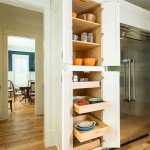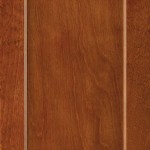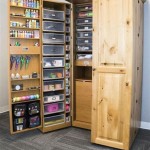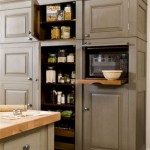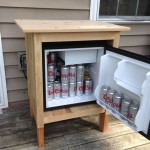Cleaning Grease from Wood Cabinets: A Comprehensive Guide
Wood cabinets, particularly those located in kitchens, are frequently susceptible to grease accumulation. Cooking activities generate airborne grease particles that settle on surfaces, including cabinet doors, drawers, and frames. Over time, this grease can become sticky, attracting dust and dirt, leading to a unsightly and difficult-to-clean residue. Addressing this issue promptly and effectively is crucial for maintaining both the aesthetic appeal and the longevity of the wood cabinets.
The composition of kitchen grease is typically a mixture of animal fats, vegetable oils, and food particles. This mixture, when exposed to air, undergoes oxidation, resulting in a hardening and darkening effect. The resulting residue not only detracts from the cabinet's appearance but can also potentially damage the wood finish over extended periods. Therefore, a consistent cleaning regimen is essential to prevent the build-up of stubborn grease deposits and to protect the integrity of the cabinet surface.
Before embarking on any cleaning procedure, it is imperative to identify the type of wood finish present on the cabinets. Different finishes react differently to various cleaning solutions. Cabinets may feature painted, stained, varnished, or lacquered surfaces. Applying an inappropriate cleaner can potentially damage the finish, leading to discoloration, peeling, or even complete removal of the protective coating. If unsure about the cabinet's finish, it is recommended to consult with a professional or to test the chosen cleaning solution on an inconspicuous area before applying it to the entire surface.
Several cleaning methods are available for removing grease from wood cabinets, ranging from gentle, natural solutions to stronger, commercially available products. The choice of method should be determined by the severity of the grease build-up and the type of finish on the cabinets. Starting with the mildest approach and gradually increasing the intensity as needed minimizes the risk of damaging the cabinet surface.
Effective Cleaning Solutions and Techniques
One of the gentlest and most readily available cleaning solutions is a mixture of warm water and dish soap. Dish soap is formulated to cut through grease and oil, making it an effective option for light to moderate grease accumulations. To prepare the solution, simply add a small amount of dish soap to a basin of warm water. It's crucial to use a mild dish soap, avoiding those with harsh chemicals or abrasive additives that could potentially damage the wood finish.
To apply the solution, dampen a soft, non-abrasive cloth in the soapy water and gently wipe down the greasy surfaces of the cabinets. Avoid soaking the wood, as excessive moisture can lead to warping or damage. It is important to wring out the cloth thoroughly before each wipe to prevent water from seeping into the wood. After wiping with the soapy solution, follow up with a clean, damp cloth to remove any soap residue.
For more stubborn grease build-up, a baking soda paste can be an effective solution. Baking soda is a mild abrasive that can help to loosen and lift grease without scratching the surface. To create the paste, mix baking soda with a small amount of water until a thick consistency is achieved. Apply the paste to the greasy areas of the cabinets and allow it to sit for a few minutes. Then, gently scrub the area with a soft cloth or sponge. It is crucial to avoid using excessive pressure, as this can potentially damage the wood finish. After scrubbing, rinse the area thoroughly with a clean, damp cloth to remove all traces of baking soda.
Another natural cleaning agent that can be used to remove grease from wood cabinets is vinegar. Vinegar contains acetic acid, which helps to dissolve grease and grime. To use vinegar as a cleaner, mix equal parts white vinegar and water in a spray bottle. Spray the solution onto the greasy areas of the cabinets and allow it to sit for a few minutes. Then, wipe the area with a clean, damp cloth. The vinegar smell will dissipate quickly, leaving behind a clean surface. Vinegar should be used with caution on certain finishes, so testing on an inconspicuous area first is recommended.
Commercial degreasers specifically formulated for wood surfaces are also available. These products often contain stronger solvents than natural cleaning agents and can be effective for removing heavy grease build-up. However, it is crucial to carefully follow the manufacturer's instructions when using these products. Always test the degreaser on an inconspicuous area before applying it to the entire surface to ensure that it does not damage the finish. Wear gloves and eye protection when using commercial degreasers, as they can be irritating to the skin and eyes.
Deep Cleaning Strategies: Tackling Stubborn Grease
When dealing with extremely stubborn grease deposits that have accumulated over a long period, a more intensive cleaning approach may be required. This may involve combining multiple cleaning methods or using specialized tools to loosen and remove the grease. Before resorting to aggressive cleaning techniques, it's essential to assess the condition of the wood finish to avoid causing irreparable damage.
A steam cleaner can be a valuable tool for loosening stubborn grease build-up. The hot steam helps to soften the grease, making it easier to wipe away. When using a steam cleaner on wood cabinets, it's important to use a low steam setting and to keep the nozzle moving to avoid concentrating the steam in one area for too long. After steaming, wipe the cabinets with a clean, dry cloth to remove any remaining moisture.
For particularly stubborn grease deposits, a toothbrush or other small brush can be used to gently scrub the affected area. Apply a cleaning solution, such as baking soda paste or a commercial degreaser, to the grease and use the brush to work the solution into the grime. Avoid using excessive pressure, as this can scratch the surface. Rinse the area thoroughly with a clean, damp cloth after scrubbing.
In some cases, the grease may have penetrated the finish and stained the wood. In these situations, it may be necessary to refinish the cabinets to restore their original appearance. Refinishing involves removing the old finish, sanding the wood, and applying a new finish. This is a more involved process that may require the assistance of a professional.
When dealing with painted cabinets, it's essential to use cleaning solutions that are specifically formulated for painted surfaces. Harsh chemicals and abrasive cleaners can damage the paint, causing it to peel or fade. A mild dish soap solution is often the best option for cleaning painted cabinets. If the grease is particularly stubborn, a commercial degreaser designed for painted surfaces can be used, following the manufacturer's instructions carefully.
Preventative Measures and Long-Term Maintenance
Preventing grease build-up is the most effective way to minimize the need for intensive cleaning. Implementing a few simple preventative measures can significantly reduce the amount of grease that accumulates on wood cabinets.
One of the most important preventative measures is to regularly wipe down the cabinets with a damp cloth. This will remove any grease particles before they have a chance to harden and become sticky. Wiping down the cabinets once a week is a good habit to develop.
Using a range hood while cooking can also significantly reduce the amount of grease that lands on cabinets. Range hoods vent the grease and smoke away from the kitchen, preventing them from settling on surfaces. Ensure that the range hood is properly sized for the stovetop and that it is cleaned regularly to maintain its effectiveness.
Splattering grease is a common occurrence during cooking. Using splatter screens on frying pans and saucepans can help to contain the grease and prevent it from splattering onto surrounding surfaces, including cabinets. Splatter screens are inexpensive and easy to use, making them a worthwhile investment.
Regularly cleaning the kitchen can also help to prevent grease build-up. Sweeping or vacuuming the floor, wiping down countertops, and cleaning the stovetop can all help to reduce the amount of grease and dirt in the kitchen. A clean kitchen is less likely to attract grease particles, which can then settle on the cabinets.
Applying a coat of furniture polish to the cabinets can also help to protect the finish and make it easier to clean. Furniture polish creates a barrier between the wood and the grease, preventing the grease from penetrating the finish. Choose a furniture polish that is specifically designed for wood surfaces and follow the manufacturer's instructions carefully. It is important to avoid using polishes that contain silicone, as these can leave a residue that is difficult to remove.
By implementing these preventative measures and establishing a consistent cleaning routine, it is possible to maintain the beauty and longevity of wood cabinets for many years to come. Recognizing the importance of early intervention and using appropriate cleaning techniques are important for maintaining the beauty and integrity of kitchen cabinetry.
:max_bytes(150000):strip_icc()/ways-to-clean-wood-kitchen-cabinets-3017289-00-fb8e5ae9eb004ec6b968f9d53e74cd1e.jpg?strip=all)
Tips For Cleaning Food Grease From Wood Cabinets

How Remove Grease From Wood Kitchen Cabinets Cleaning Clean

How To Clean Greasy Kitchen Cabinets Cleaning Cleaningtips

How To Clean Sticky Grease Off Kitchen Cabinets Ovenclean

Removing Grease From Kitchen Cabinets House Cleaning Tips Safe S Clean
:max_bytes(150000):strip_icc()/ways-to-clean-wood-kitchen-cabinets-3017289-01-765f893e7cca49a1ab72d7c49efdf518.jpg?strip=all)
Tips For Cleaning Food Grease From Wood Cabinets

Get Grease Off Kitchen Cabinets Easy And Naturally

We Tried 5 Methods To Clean Greasy Wood Cabinets And The Winner Is Ridiculously Effective Kitchn Cleaning Kitchen

How To Clean Kitchen Cabinets Everyday Skate

How To Clean Wood Cabinets And Make Them Shine
Related Posts

